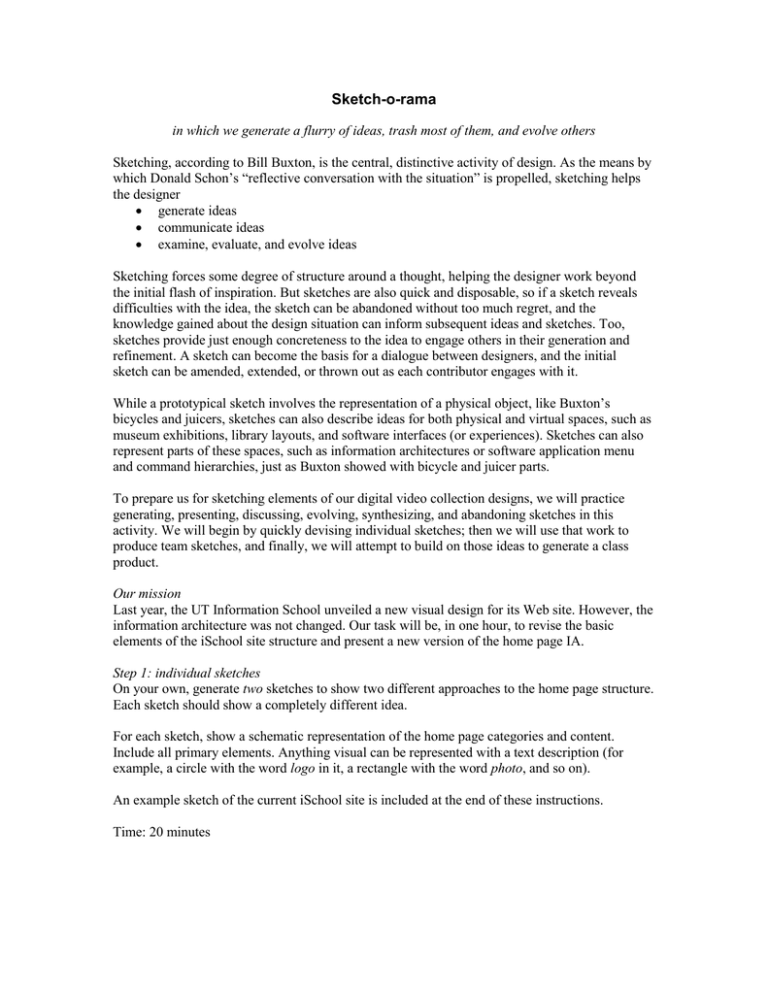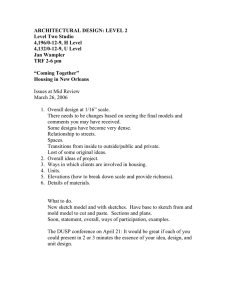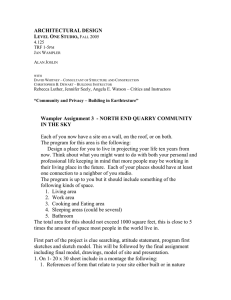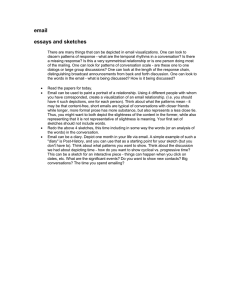Sketch-o-rama
advertisement

Sketch-o-rama in which we generate a flurry of ideas, trash most of them, and evolve others Sketching, according to Bill Buxton, is the central, distinctive activity of design. As the means by which Donald Schon’s “reflective conversation with the situation” is propelled, sketching helps the designer generate ideas communicate ideas examine, evaluate, and evolve ideas Sketching forces some degree of structure around a thought, helping the designer work beyond the initial flash of inspiration. But sketches are also quick and disposable, so if a sketch reveals difficulties with the idea, the sketch can be abandoned without too much regret, and the knowledge gained about the design situation can inform subsequent ideas and sketches. Too, sketches provide just enough concreteness to the idea to engage others in their generation and refinement. A sketch can become the basis for a dialogue between designers, and the initial sketch can be amended, extended, or thrown out as each contributor engages with it. While a prototypical sketch involves the representation of a physical object, like Buxton’s bicycles and juicers, sketches can also describe ideas for both physical and virtual spaces, such as museum exhibitions, library layouts, and software interfaces (or experiences). Sketches can also represent parts of these spaces, such as information architectures or software application menu and command hierarchies, just as Buxton showed with bicycle and juicer parts. To prepare us for sketching elements of our digital video collection designs, we will practice generating, presenting, discussing, evolving, synthesizing, and abandoning sketches in this activity. We will begin by quickly devising individual sketches; then we will use that work to produce team sketches, and finally, we will attempt to build on those ideas to generate a class product. Our mission Last year, the UT Information School unveiled a new visual design for its Web site. However, the information architecture was not changed. Our task will be, in one hour, to revise the basic elements of the iSchool site structure and present a new version of the home page IA. Step 1: individual sketches On your own, generate two sketches to show two different approaches to the home page structure. Each sketch should show a completely different idea. For each sketch, show a schematic representation of the home page categories and content. Include all primary elements. Anything visual can be represented with a text description (for example, a circle with the word logo in it, a rectangle with the word photo, and so on). An example sketch of the current iSchool site is included at the end of these instructions. Time: 20 minutes Step 2: team sketches In one group of two and one group of three people, first present and discuss your individual sketches. Then, drawing on your reactions and discussions of the individual sketches, create a new sketch for the team. The new sketch should not replicate one person’s idea, although that idea may inform your new synthesized approach. Finish early? Create another sketch with a completely different (and I mean completely different) idea. Time: 15 minutes. Step 3: class sketch Each group will present its sketch (or sketches) to the class, in presentations of two minutes or less. After discussing each idea, we will use these insights to create a new idea as a group. Time: 15 minutes.





